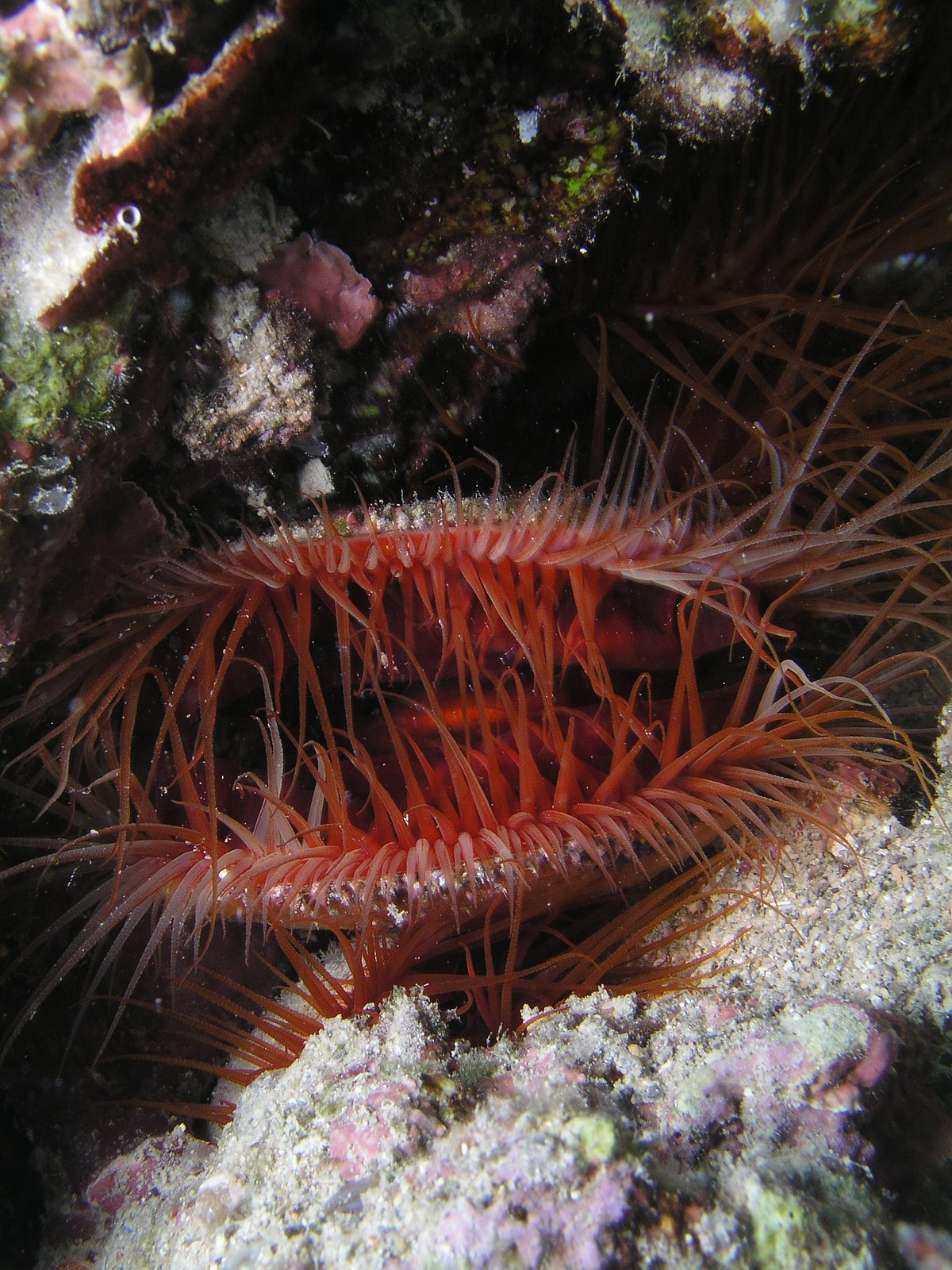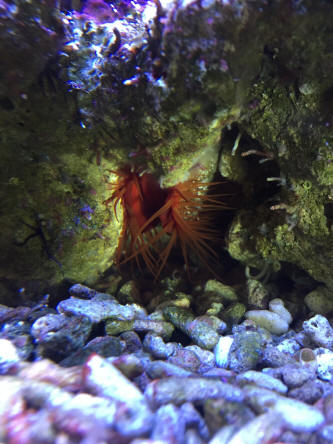Plain text and references here
Flame Scallop - Ctenoides Scaber
Photo from wikipedia

Overview
Minimum Tank Size: 20 Gallons with supplemental feedings
Care Level: Dedicated/Expert
Temperature: 72-78F
Specific Gravity: 1.020-1.026
Reef Safe: Yes
Feeding
Flame Scallops are non-photosynthetic filter feeders that will only eat food of the size they prefer (mainly phytoplankton between 5-40 micron and zooplankton that’s under 200 microns). In the home aquarium they need an endless supply of platonic foods in the water at all times; these platonic foods should include but are not limited to, phytoplankton. Copepod nauplii, diatoms, etc.
While Flame Scallops can survive through spot feeding, broadcast feeding is highly recommended as it insures that food is always available and will help contribute to overall life in the tank.
One successful addition to your feeding regime is turkey basting your sand bed.
Defense
The Flame Scallop lacks many forms of defense and will hide in the darkness of caves. In the home aquarium, expect the scallop to wander around the tank until it hides in a cave where it can’t be bothered.
Picture from Wet Web Media

Another form of defense is its ability to swim fast and spray a jet of water at oncoming predators. (Mine once spit water across my whole room!)
Life Span
Averaging around 2-3 years in the wild, Flame Scallops usually are short lived in home aquariums (averaging around a year) and even shorter when kept under poor conditions.
Tank mates
A peaceful species, the Flame Scallop should be kept with other peaceful inhabitants which won’t pose a threat in harming them.
Tank Preferences
Flame Scallops are non-photosynthetic inverts which prefer the dark; however if you have a bright tank, they will swim until they can find a dark cave in the tank.
Due to the dietary recommendations, they should be added to mature tanks full of copepods and rich with platonic foods. A tank containing these creatures should not be clear, it should be full of food particles at all times!
Introducing to the tank
As with all inverts, this species should be drip acclimated over a period of a couple hours before added to the tank. While they may lay where placed for a while, they will soon take off and settle where they please; once settled, these creatures should not be disturbed as they will be stressed and end up returning anyway.
Breeding
Flame Scallops are born male or female and reproduce through broadcast spawning
Suggested Equipment
Due to their requirements of food needing to be in the tank constantly, a form of nitrate reduction is needed due to the added bio-load of food alone. It is also worth mentioning that a healthy scallop is a pooping machine, which adds even more onto the bio-load.
As far as recommendations, a doser is a nice addition to keep food in the water column and the skimmer you use (if any) shouldn’t be able to pull all the organics out the water.
Fun Fact
Flame Scallops aren’t true scallops but members of the scallop family, and this becomes apparent by the way they swim.

Flame Scallop - Ctenoides Scaber
Photo from wikipedia

Overview
Minimum Tank Size: 20 Gallons with supplemental feedings
Care Level: Dedicated/Expert
Temperature: 72-78F
Specific Gravity: 1.020-1.026
Reef Safe: Yes
Feeding
Flame Scallops are non-photosynthetic filter feeders that will only eat food of the size they prefer (mainly phytoplankton between 5-40 micron and zooplankton that’s under 200 microns). In the home aquarium they need an endless supply of platonic foods in the water at all times; these platonic foods should include but are not limited to, phytoplankton. Copepod nauplii, diatoms, etc.
While Flame Scallops can survive through spot feeding, broadcast feeding is highly recommended as it insures that food is always available and will help contribute to overall life in the tank.
One successful addition to your feeding regime is turkey basting your sand bed.
Defense
The Flame Scallop lacks many forms of defense and will hide in the darkness of caves. In the home aquarium, expect the scallop to wander around the tank until it hides in a cave where it can’t be bothered.
Picture from Wet Web Media
Another form of defense is its ability to swim fast and spray a jet of water at oncoming predators. (Mine once spit water across my whole room!)
Life Span
Averaging around 2-3 years in the wild, Flame Scallops usually are short lived in home aquariums (averaging around a year) and even shorter when kept under poor conditions.
Tank mates
A peaceful species, the Flame Scallop should be kept with other peaceful inhabitants which won’t pose a threat in harming them.
Tank Preferences
Flame Scallops are non-photosynthetic inverts which prefer the dark; however if you have a bright tank, they will swim until they can find a dark cave in the tank.
Due to the dietary recommendations, they should be added to mature tanks full of copepods and rich with platonic foods. A tank containing these creatures should not be clear, it should be full of food particles at all times!
Introducing to the tank
As with all inverts, this species should be drip acclimated over a period of a couple hours before added to the tank. While they may lay where placed for a while, they will soon take off and settle where they please; once settled, these creatures should not be disturbed as they will be stressed and end up returning anyway.
Breeding
Flame Scallops are born male or female and reproduce through broadcast spawning
Suggested Equipment
Due to their requirements of food needing to be in the tank constantly, a form of nitrate reduction is needed due to the added bio-load of food alone. It is also worth mentioning that a healthy scallop is a pooping machine, which adds even more onto the bio-load.
As far as recommendations, a doser is a nice addition to keep food in the water column and the skimmer you use (if any) shouldn’t be able to pull all the organics out the water.
Fun Fact
Flame Scallops aren’t true scallops but members of the scallop family, and this becomes apparent by the way they swim.












